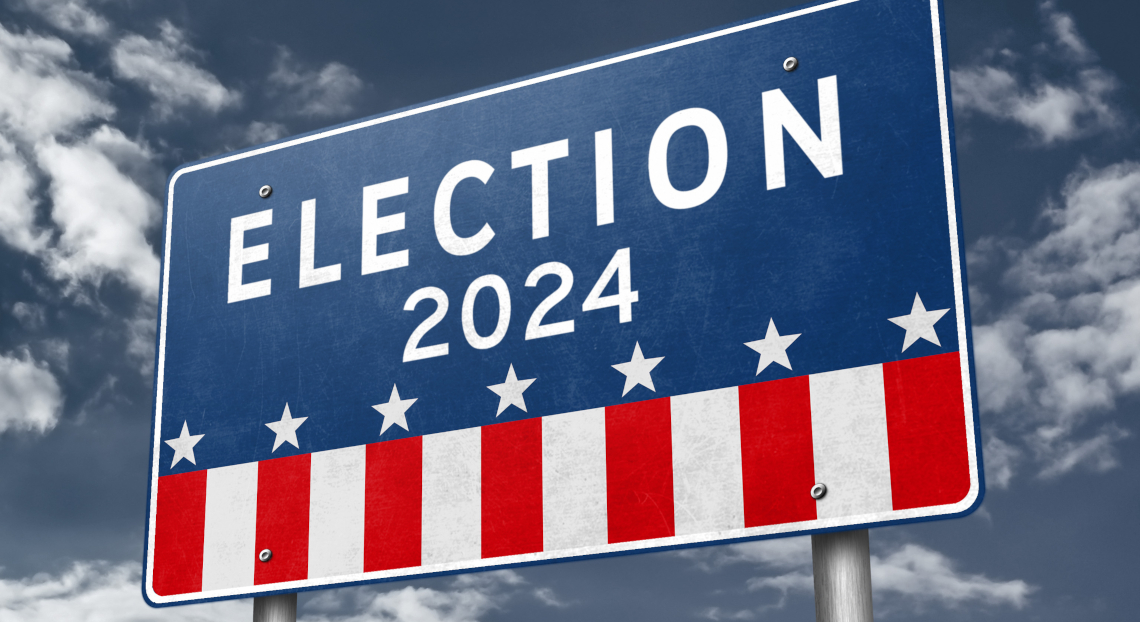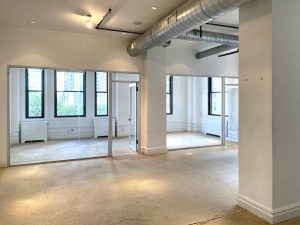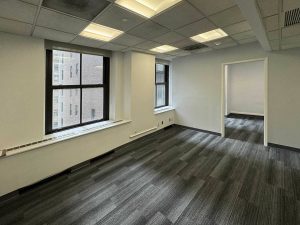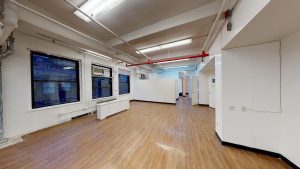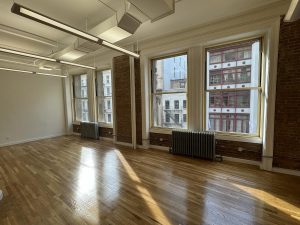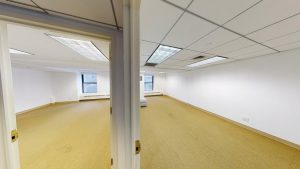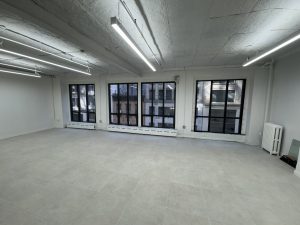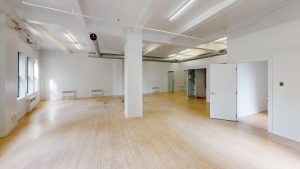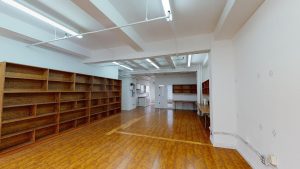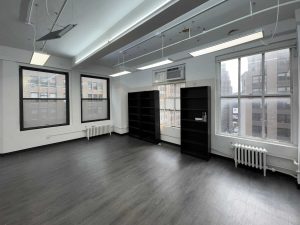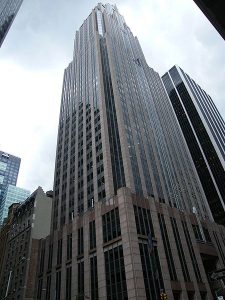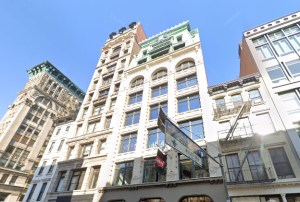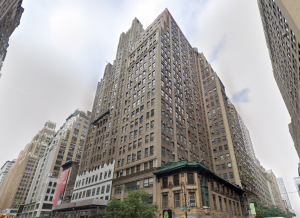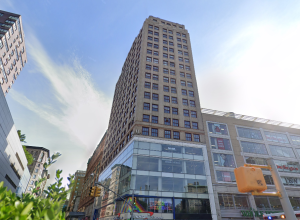Election 2024 is here, and New York’s real estate world is on edge. Landlords, tenants, and developers are all asking: How will the next president change the rules of the game?
The stakes couldn’t be higher for small business owners eyeing their first lease and CEOs planning their next headquarters. New tax policies could mean the difference between expansion and downsizing. Zoning changes might turn a quiet block into the next hot commercial strip. And shifts in foreign investment could make or break significant projects.
So, as election 2024 nears, we break down how each candidate’s plans could reshape NYC’s commercial real estate – and your bottom line.
Background Info on the Current State of NYC’s Commercial Real Estate Market
Before we dig into Harris and Trump, let’s look at the latest facts and figures surrounding New York City’s commercial real estate market to add context and substance.
Office Space: Adapting to New Realities
Manhattan’s office market shows signs of both struggle and resilience. In Q3 2024, new leasing demand hit 5.3 million square feet, a 15.9% drop from the previous quarter. Yet, there’s a silver lining – year-to-date leasing activity totaled 26.1 million square feet, up 24.7% from last year.
Class A assets dominate the scene, making up 79.7% of Midtown’s third-quarter leasing activity. However, rents have reached historically low levels for more generic Class A, B, and C office spaces. Older Class A properties have seen a significant drop in rent rates. The average asking rent for these properties is now around $58.13 per sq, Class B properties $48.75 per sq. ft, and Class C properties at less than $40 per sq. ft. Office rents in New York City haven’t been this low since the early 1990s, with current average asking rents comparable to those seen during the economic downturns of the early 1990s and the post-9/11 period. That’s quite a big deal if you’re an office tenant seeking a new space or renewal.
So, unsurprisingly, we’re seeing contrasting narratives emerge in the commercial real estate market. Major players like Blackstone are making significant moves, renewing and expanding to 1,019,100 square feet, while Christie’s and Willkie Farr & Gallagher have secured renewals of 373,000 and 333,450 square feet, respectively. However, beneath these large-scale transactions, many smaller landlords are struggling. For these property owners, government policies and economic support could mean the difference between staying afloat and facing mortgage default, potentially leading to repossession by lending institutions.
Beyond Offices: A Broader Market Perspective
The commercial real estate story extends beyond office spaces. Overall real estate sales volume grew 6% in Q3 compared to Q2, with about 2,350 transactions. The Upper East Side and Downtown Manhattan led the charge, accounting for 30% of all sales.
Yet the New York City real estate market is showing mixed trends across different sectors. Inventory is on the rise, with a 12% growth in overall listings from Q2 to Q3, Manhattan boasting around 8,000 active listings and Brooklyn trailing with 6,500. The luxury segment, covering homes above $5 million, has seen a significant rebound in Manhattan, racking up $1.8 billion in total sales, with Tribeca and the Upper West Side witnessing multiple high-roller deals exceeding $20 million each.
However, commercial buildings in the city, particularly in Manhattan, are generally selling for less compared to previous years, despite some premium areas like Park Avenue seeing increased rents and decreased vacancies due to significant renovations. Cap rates for commercial properties have increased slightly, with Class A office buildings in Midtown now having cap rates around 7.7%, indicating lower property values relative to their income. Meanwhile, the apartment market has experienced price increases, with the average rent in New York City reaching $3,902 per month as of October 2024, a 2.8% increase from the previous year.
So with all that said, how would a Kamala Harris or Donald Trump win impact things?
Here’s How a Kamala Harris Win Could Shake Up NYC’s Commercial Real Estate Scene
A Harris victory in election 2024 could usher in a wave of changes for New York City’s commercial real estate market. From tax hikes on the wealthy to green building initiatives, her proposed policies and economic strategies promise to reshape the market. L
New Rules of the Game: Development Policies and Zoning Changes
Harris aims to fast-track permitting processes, potentially cutting red tape for NYC developers. This could mean quicker project timelines and lower costs. But don’t expect a free-for-all – her administration would likely push for stricter environmental standards on new construction.
Green building practices would take center stage, with incentives for energy-efficient retrofits of existing properties. Developers might need to up their game to meet these higher eco-friendly benchmarks. Transit-oriented development would also get a boost, potentially concentrating new commercial projects around subway and bus hubs.
The concrete jungle might get a bit greener too. New York State has committed to slashing carbon emissions from concrete by 30% by 2028. While this aligns with Harris’ climate goals, it could bump up construction costs for developers in the short term.
Foreign Investment: Open Arms or Closed Doors?
Harris’ policies could be a double-edged sword for international investors eyeing NYC’s commercial real estate. On one hand, her infrastructure spending plans and tax credits for affordable housing construction might entice foreign capital. Improved public transit and clean energy initiatives could make the city even more appealing to overseas investors.
However, it’s not all smooth sailing. Harris proposes hiking the tax rate on foreign income from 10.5% to 21%. This could give some international players pause before pouring money into NYC properties. Add in stricter environmental regulations and potential economic uncertainty from anti-inflation measures, and some foreign investors might think twice.
Yet, for those focused on sustainability, Harris’ green building push might actually be a draw. Her emphasis on clean construction materials and eco-friendly practices aligns with global trends, potentially attracting like-minded investors from abroad.
Trump’s Potential Victory: A Seismic Shift for NYC Commercial Real Estate
Donald Trump’s possible return to the White House could also reshape New York City’s commercial real estate scene. His previous tenure saw sweeping changes that reverberated through the market, and a second term after winning election 2024 might amplify these effects. Whether it’s about trade wars or tax cuts, Trump’s policies could have far-reaching consequences for developers, investors, and tenants alike. Controversies and all.
Foreign Investment Freeze: The Trump Effect on International Money
Trump’s hardline stance on foreign relations during his first term sent shockwaves through NYC’s commercial real estate market. Chinese investors, once major players, pulled back significantly due to escalating trade tensions and tariffs. This retreat wasn’t limited to China – other countries caught in Trump’s crosshairs also hesitated to pour money into NYC properties. The EB-5 visa program, a popular route for foreign real estate investment, saw declining participation as immigration policies tightened. A second Trump term could further chill international appetites for NYC commercial properties, potentially leaving a void in the market that domestic investors may struggle to fill. Including with his famous buildings 40 Wall Street and Trump Tower.
Fiscal Rollercoaster: Tax Breaks, Construction Costs, and Market Volatility
Trump’s fiscal policies present a mixed bag for NYC’s commercial real estate sector. The Tax Cuts and Jobs Act of 2017 introduced enticing benefits, including a 20% deduction on qualified business income for pass-through entities and generous depreciation allowances. These perks could stick around or even expand in a second Trump term, sweetening the deal for real estate investors.
However, Trump’s trade policies have driven up construction costs, with tariffs on steel and aluminum hitting developers’ bottom lines. His deregulation push might grease the wheels for new developments, but critics warn it could also lead to riskier lending practices and market instability. The office space sector, already reeling from pandemic-induced remote work trends, and luxury developments, which have seen reduced international demand, might face particular uncertainty under another Trump administration.
Another thing to consider? New York City has received substantial federal aid from Washington, including over $27 billion in pandemic assistance for FY 2020-2026 (with $2.4 billion earmarked for FY 2024), $300 million in direct funding for migrant services, an additional $340.9 million through the Shelter and Services Program-Competitive grant program, and $10 million in general federal aid for FY 2024. Could a Trump administration vindictively cut aid to overwhelmingly Democratic NYC for political reasons?
Final Words on Election 2024
Whether you’re running a corner bodega or managing a tech startup’s office, big changes are coming no matter who wins election 2024- your rent, your taxes, even the foot traffic outside your door.
So what can you do? Start by talking to other business owners in your area. What are they hearing? What are they planning for? Keep a close eye on your lease terms and start gaming out different scenarios now. Maybe you’ll need to negotiate harder on your next renewal, or perhaps it’s time to consider a move to a different neighborhood.
Whatever happens, don’t get caught flat-footed. In this city, being prepared is how you survive and thrive. The next few years might be a rollercoaster, but for those who stay alert and flexible, there’s always an opportunity.
